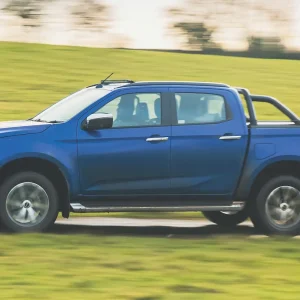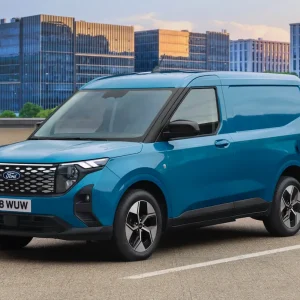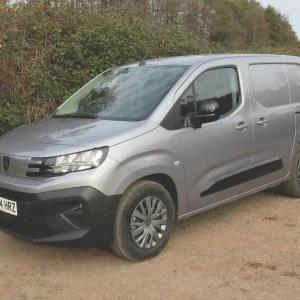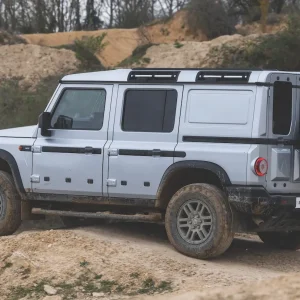Renault is a long-established player in the electric small van market, having first introduced a plug-in version of its Kangoo over a decade ago. Competition in the segment has increased significantly since then, so it’s a good job that with the all-new third generation of the Kangoo comes the latest E-Tech electric version, which has all the makings of a major step forward. Where the previous Kangoo Z.E offered just 60hp from its electric motor, and a 33kWh battery provided a 143-mile WLTP range, the new model ups these figures to 121hp and 45kWh (186 miles) respectively. A full battery recharge can be completed by a 7.4kW wallbox in just over six hours, or alternatively a 75kW DC rapid charge is possible, delivering an 80% charge in around 42 minutes.
It looks good on paper – and this favourable impression remains from behind the wheel. Immediate electric power delivery helps the van feel very sprightly around town, even with a 150kg payload on our test drive, and the increased motor power means strong acceleration continues up to A-road speeds. As you’d expect with an EV refinement is excellent, with a soundless powertrain meaning the only disturbance comes from a bit of wind noise around the door mirrors at higher speeds. Ride quality is also impressive, with the van’s suspension having no trouble absorbing ruts and pock marks on urban roads. As for driving dynamics, the steering is accurate, and usefully light around town before weighting up nicely at higher speeds to help boost driver confidence, and the van is a willing handler, feeling well planted to the road and responding nicely to inputs in bends. The brakes are good too, offering strong stopping power with no difficulties in pedal modulation.
Three levels of regenerative braking, where powertrain friction is used to slow the van and add extra range, are available, but even at the most extreme setting this isn’t too severe – it isn’t full one-pedal driving. Speaking of extra range, it’s also possible to select an eco-driving mode, but the benefit of this isn’t too apparent from behind the wheel – it just seems to make you push the accelerator pedal a bit harder to achieve the same effect.
Generally, there’s a very car-like feel to the driving experience, and that also extends to the van’s interior, which mostly stands good in comparison with Renault’s car range apart from maybe some slightly harder-wearing plastic choices. Although there’s no full digital driver display, you do get a neat adaptation of traditional ICE-van instruments, however the infotainment screen you do get can take a bit of persuasion to respond to touches.
We were also impressed by the optional permanent rear-view camera, fitted to our test van in place of a conventional central interior mirror, which gives a large and clear view of what is going on behind.
The Kangoo E-Tech is available with a choice of two vehicle lengths, and with either Start or Advance trim levels. The obvious main rivals are the Stellantis trio of the Citroën e-Berlingo, Peugeot e-Partner, and Vauxhall Combo-e, and their platform-sharing cousin the Toyota Proace City Electric. Compared with those models the Renault is slightly down on power, but it does offer a slightly longer WLTP range. However, those models also offer a significantly higher payload, at around 800kg to the Kangoo’s 615kg – although the Renault hits back again with a 1,500kg braked towing capacity, which is double what the Stellantis vans can manage.
Renault Kangoo E-Tech ML19 Advance Panel Van
Price (ex. VAT, inc. PIVG) £27,500
Price range (ex. VAT, inc. PIVG) £26,500–£29,000
Insurance group tbc
Warranty 3yrs/100,000mls (drivetrain 4yrs/100,000mls, battery 5yrs/62000mls)
Service intervals 1yr/12,000mls for first two services, then 2yrs/24,000mls after
Load length 1,806mm
Load width (min/max) 1,284mm/1,570mm
Load bay height 1,215mm
Gross payload 615kg
Load volume 3.3m3
Engine size/power 121hp electric motor with 45kWh battery
Range 186mls
CO2 0g/km





